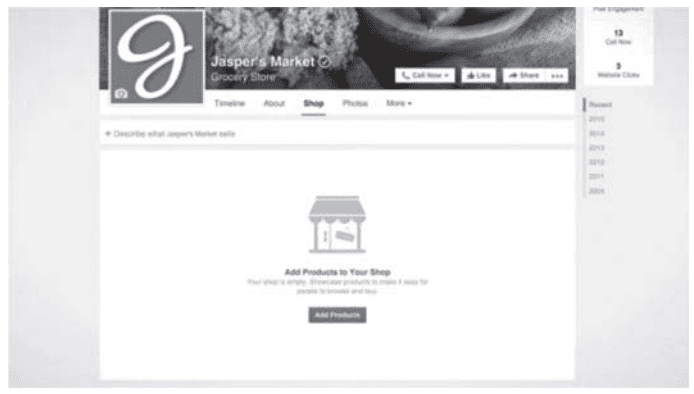Trends in Commerce Education: In order to attain Economic Growth of a region or a country, one needs professional Economists and Accountants either advanced practical knowledge to enable to evaluate and analyze the complexities of the large scale business and other. To avail the advantage of Commerce, a lot of educational institutions have been opened to educate students in the field of Commerce with more knowledge on practical.
Since the Indian economy is one of the fastest growing economics among the third world countries, the need for talented professionals, who can contribute towards the growth of the economy, is the need of hour. “Commercial education is fundamentally a programme of economic education that has to do with the acquirement, conservation and spending of wealth”.
E-commerce:
E-commerce involves conducting business using modern communication instrument like internet, fax, telephone, e-data interchange, e-payment, money transfer system. E-commerce provides multiple benefits to the consumers in the form of availability of goods at lower cost, wider choice and save timers. similarly, online services such as internet banking, tickets includes airlines, railways, bus bill payment, hotel booking etc. have been tremendous benefit for the customers. E-commerce education has been phenomenal in making a deep impact on higher education. Growth in the internet over the last few decades has led to great impact on communication and research in the institutes.
E-governance:
E-governance is the future; many countries are looking to for a corruption free government. E-government is one-way communication protocol whereas e-governance is two-way communication protocol. The essence of egovernance is to reach the beneficiary and ensure that the services intended to reach the desired individual has been met with. There should be an auto-response system to support the essence of e-governance, whereby the government realizes the efficiency of its governance.
Advertisement
Content in this Article
E-learning:
It has become an important mode of education. Since the regular courses in India are getting very expensive and highly competitive, distance and online educating is fast developing as an amazing option for the students elearning opportunities are immense in India. Even distance education programs are saving wonderfully. Distance learning can be availed through various types such as interactive CD-ROM programs, mobile learning programs, Telecourses or broadcast course via television or radio, postal correspondence programs and many more.
E-marketing:
Electronic marketing is directly marketing a commercial message to a group of people using email. In its broadest sense, every email sent to a potential or current customer could be considered email marketing. It usually involves using email to send ads, request business, or solicit sales or donations, and is meant to build loyalty, trust, or brand awareness. Email marketing can be done to either sold lists or current customer database.
E-banking:
Online banking (internet banking or e-banking) allows customers of financial institutions to conduct financial transactions on a secured website operated by the institutions which can be a retail bank, virtual bank, credit union or building society. Telemarketing: the number of manufacturers of various brands is using various television channels to sale their products all over the world. The targeted customers are the viewers of the television spread all over the world.
The targeted sales are achieved by saving time, cost of sales and avoiding total chain of distribution. An effective telemarketing process often involves two or more calls. The first call (or series of calls) determines the customers’ needs. The final call (or series) prospective customers are identified by various means, including past purchase history, previous requests for information, credit limit, competition entry forms and application forms.
Social Commerce Social commerce is defined as the ability to make a product purchase from a third-party company within the native social media experience.
For example, you can browse and compare products on Facebook and then make the purchase on Facebook itself vs. going to the company’s site to make the purchase. Or you can learn about a product in a tweet and make the purchase on Twitter itself.
Right now, there are three social media sites that are owning the social commerce space: Facebook, Twitter and Pinterest.
1. Facebook
Recently, Facebook has doubled down on social commerce. Companies can create entire “Shop Now” stores and even Messenger is being used by companies to interact with consumers (both pre- and post-sale).
With a Facebook store, you can…
- Upload products and product information.
- Curate and customize your shop’s product catalog.
- Sell directly from your Page.
- Manage orders.
- Run a Facebook ad to promote one of your products.
- Get insights.
You’ll start off with something like this…

And build it out however you like. A word of advice…? Select the right products for the audience and be aware of product order. You don’t need to put your entire inventory in your Facebook shop. Try releasing products to Facebook first to see how they go over, rerelease old products on Facebook, focus on your top sellers, etc.
Experiment to see what works for you, but remember that Facebook is a social network and not everyone is sold on this social commerce concept, yet. Don’t overwhelm your audience with choice… narrow it down for them.
2. Twitter
You can also sell to customers directly via Twitter now, as well. Essentially, any product that you’ve tweeted will include a buy button, which means your audience can buy from you without leaving Twitter.
Here’s an example…

Twitter has teamed up with a number of eCommerce partners to make it all possible (and seamless).
Of course, promoted tweets, like Facebook ads, are an added benefit. They make it easier to expand your audience and get your products in front of more likeminded buyers. You can run Twitter-only sales, host flash sales, product releases, etc. all from Twitter.
Like Facebook, Twitter stores payment information so that it doesn’t need to be entered repeatedly, making the mobile shopping experience smoother.
3. Pinterest
Buyable pins were released in June 2015. At the time, there were 30 million on the site, but just three months later, Pinterest reported that the number had doubled to 60 million. According to Shopify, the average order value of sales from Pinterest is $50, which is higher than any other social media site.
Here’s a look at the Pinterest commerce flow…

You can then select “Buy It” and make a purchase right then and there with either Apple Pay or credit card. Pinterest has worked with a number of major retailers, like…
- Macy’s
- Nordstrom
- Bloomingdale’s
- Wayfair
What’s unique about Pinterest is that a small portion of the site’s content is original. According to one source, 80% of Pinterest content is repines. This is a major benefit for you, an original content creator
Be sure to feature your products in various colors. I don’t need to tell you that the visual representation of your product is clutch, so spend the time (and money) to perfect your product images.
Conclusion and Suggestions
The traditional Commerce education has become irrelevant in the new era of globalization. There is an urgent need to overhaul the existing business education system to cope up with the dynamic world with trade and commerce assuming innovative dimensions in the context of growing international business, the curricula for Commerce faculty should be adapted and re-structured to meet the future challenges of the economic, manufacturing and service sectors.
Keeping in mind the significance of modern commerce education, the Indian government has liberalized the commerce and business education market since 1990s, resulting in an unprecedented growth in the number of commerce and management institutions mostly through private participants. Education now becomes an industry, there is explosion of technologies and knowledge in all sphere.
The quality of Commerce Education has become a major marketing issue in the changing environment. As per specialization, a practical training should be provided to the students. By making relevant and practical oriented Commerce Education, we may impact global competitiveness to our students.
Recommended
- Challenges and Opportunities in Commerce Education in India
- Mark Zuckerberg Net Worth
- Top 5 Richest Female Entrepreneurs You’d Love to Date
- If you can’t cut your expenses, increase your income – earn online
- 4 Ways to Ensure the Best Higher Education for Your Child

